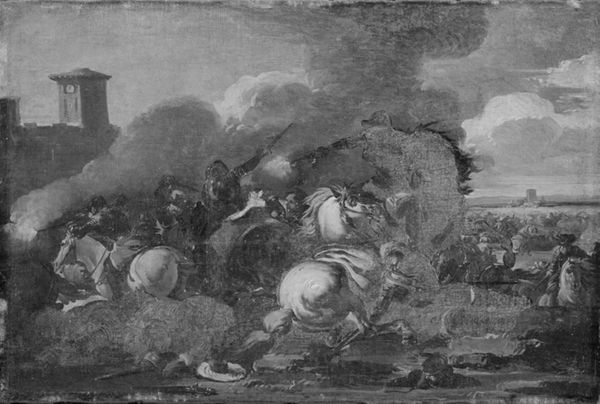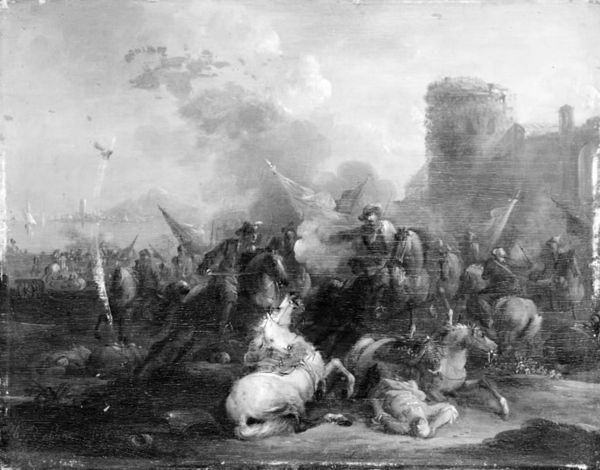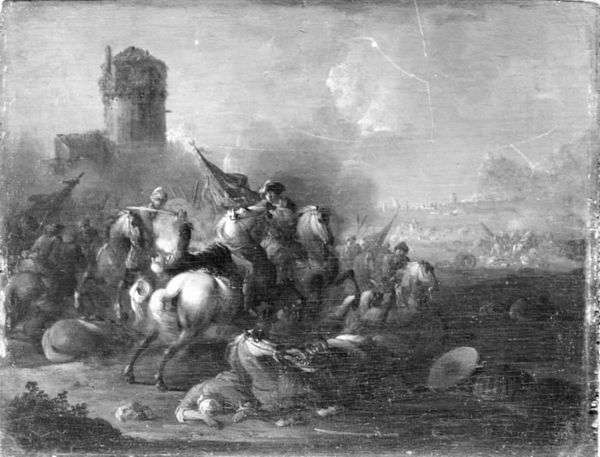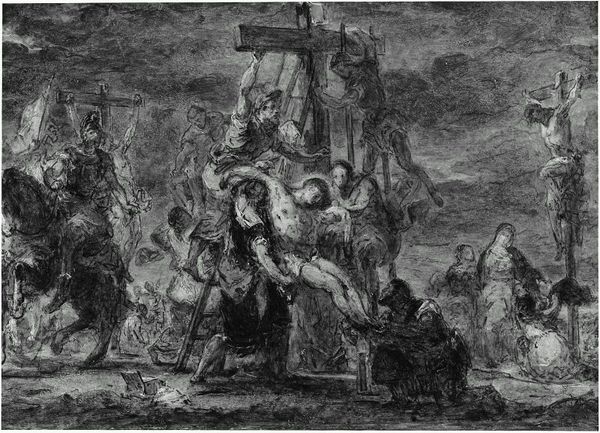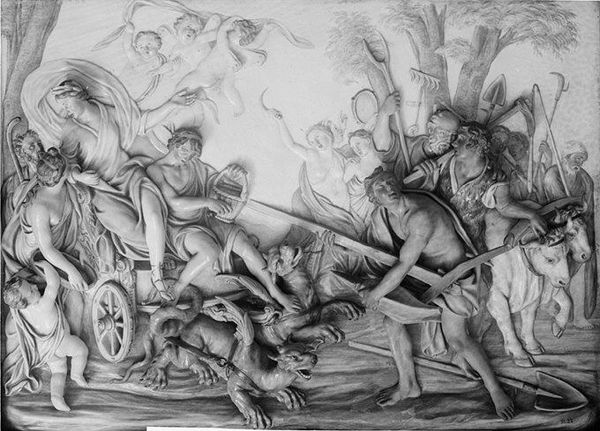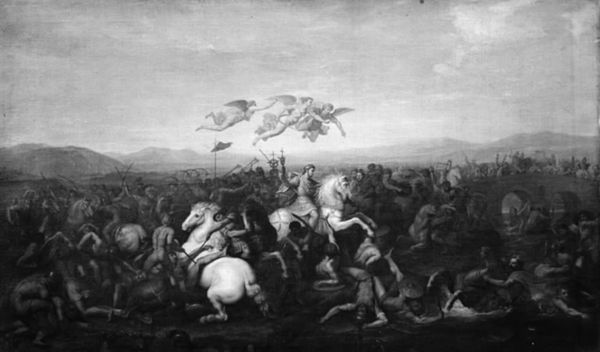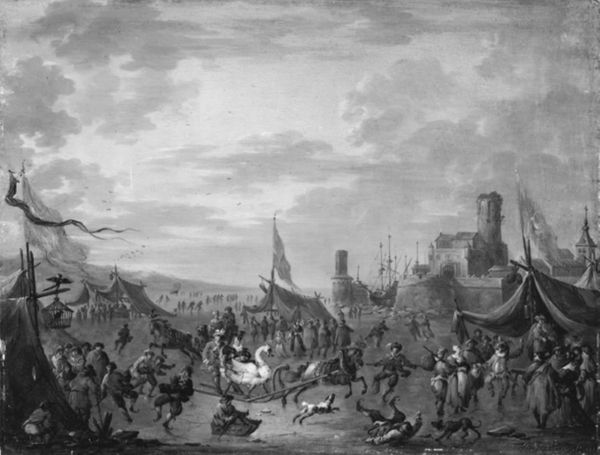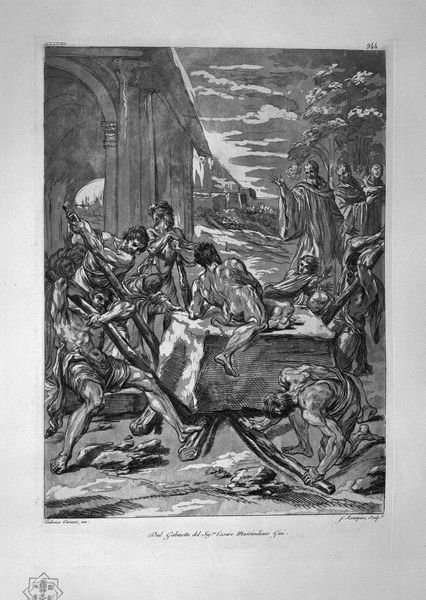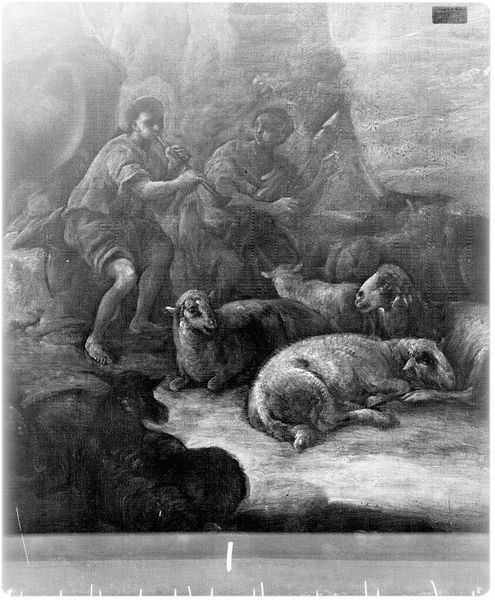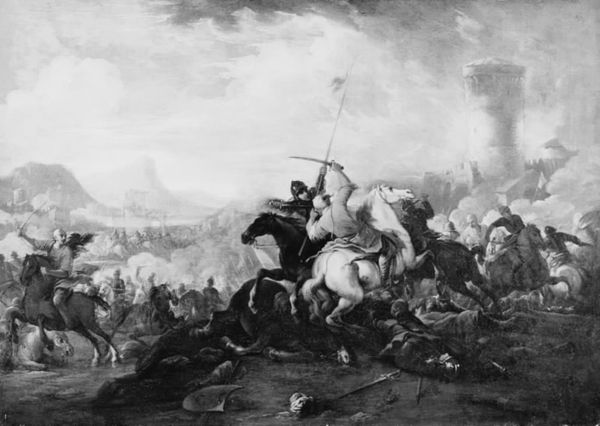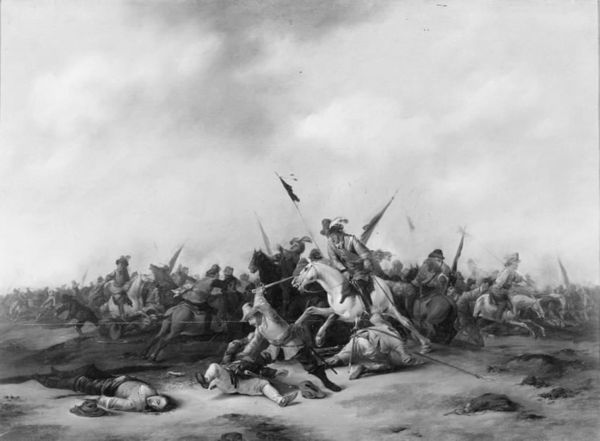
painting, etching
#
narrative-art
#
painting
#
etching
#
landscape
#
romanticism
#
black and white
#
history-painting
#
monochrome
#
monochrome
Dimensions: 12 3/4 × 16 in. (32.5 × 40.7 cm)
Copyright: Public Domain
Editor: So this is "The Diligence" by Nicolas Toussaint Charlet, painted around 1820-1823. It's currently at the Art Institute of Chicago. The etching presents as a very romantic and historical painting, and seems intensely bleak with its stark monochromatic palette and chaotic composition. What strikes you most about it? Curator: For me, the etching’s monochrome palette spotlights the production of printmaking itself. It highlights the way etching allowed for the wide dissemination of imagery, thus serving socio-political ends. It appears mass production serves the romantic aim of capturing such intense human scenes for popular consumption. Considering that, how does the image's apparent chaos appear different to you? Editor: Well, thinking about that wider audience, I can see it. The image doesn't just depict the hardship, but almost *performs* it with the density of detail. So is that the Diligence the *cart* depicted? Is there a double meaning related to its diligence and laborious craftsmanship and subject matter? Curator: Absolutely! The “diligence” of labour – the artist's, the printmaker's, even the overloaded cart driver’s, comes sharply into focus. Each line meticulously etched, each print carefully made and sold, to remind viewers of the material struggles and the social hierarchies they reflect and reinforce. Even the location--how do you think the place exhibited here changes your viewpoint about the Diligence? Editor: Now that you mention it, that giant crucifix, as well as what appear to be soldiers amidst all that turmoil seems very intentional. I had not thought to apply that kind of labor analysis to a landscape piece. I learned so much about material and the human effort in this piece, beyond it being about just the figures involved. Thank you! Curator: Of course! Sometimes, the best way to understand a work is to look at how it was made and distributed. Doing so connects romantic art to wider networks of production and reception that often escape consideration.
Comments
No comments
Be the first to comment and join the conversation on the ultimate creative platform.

